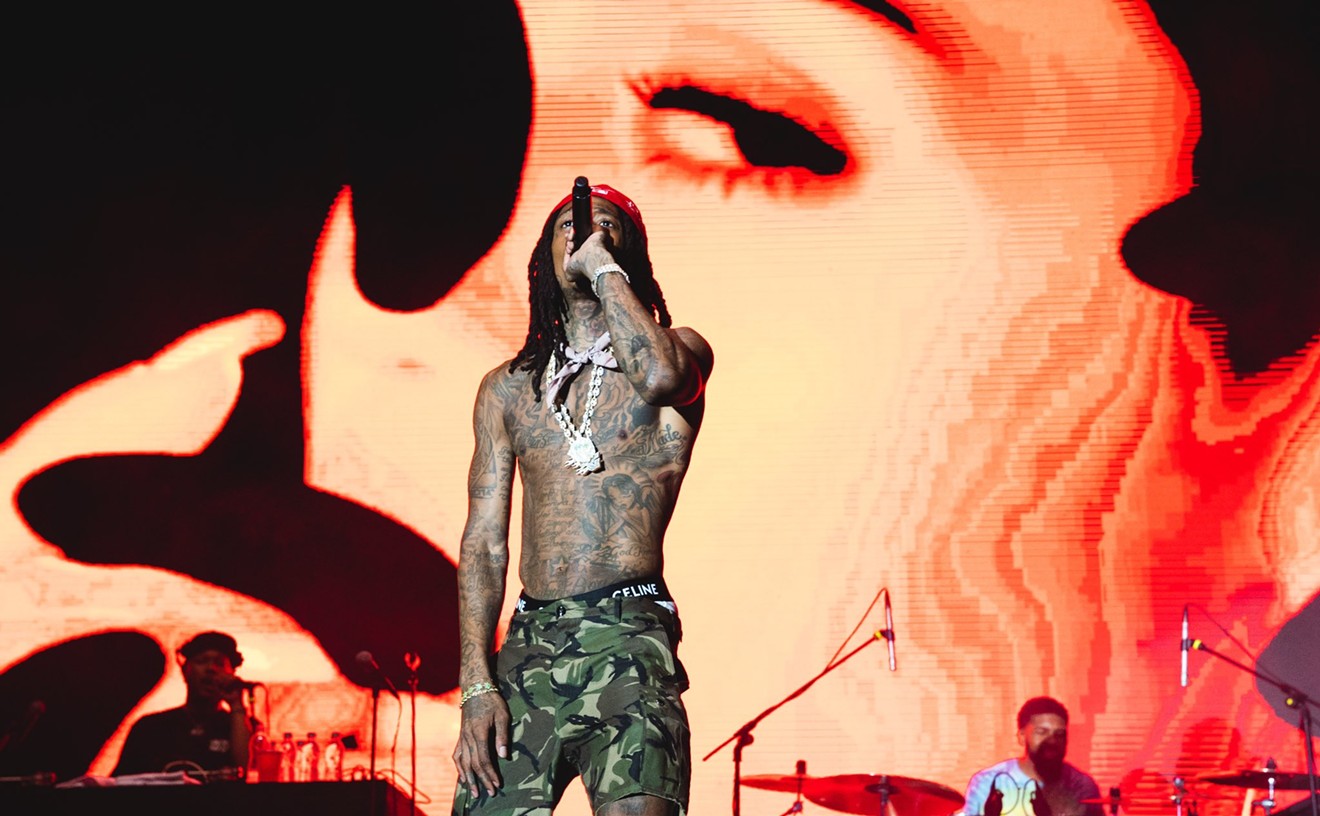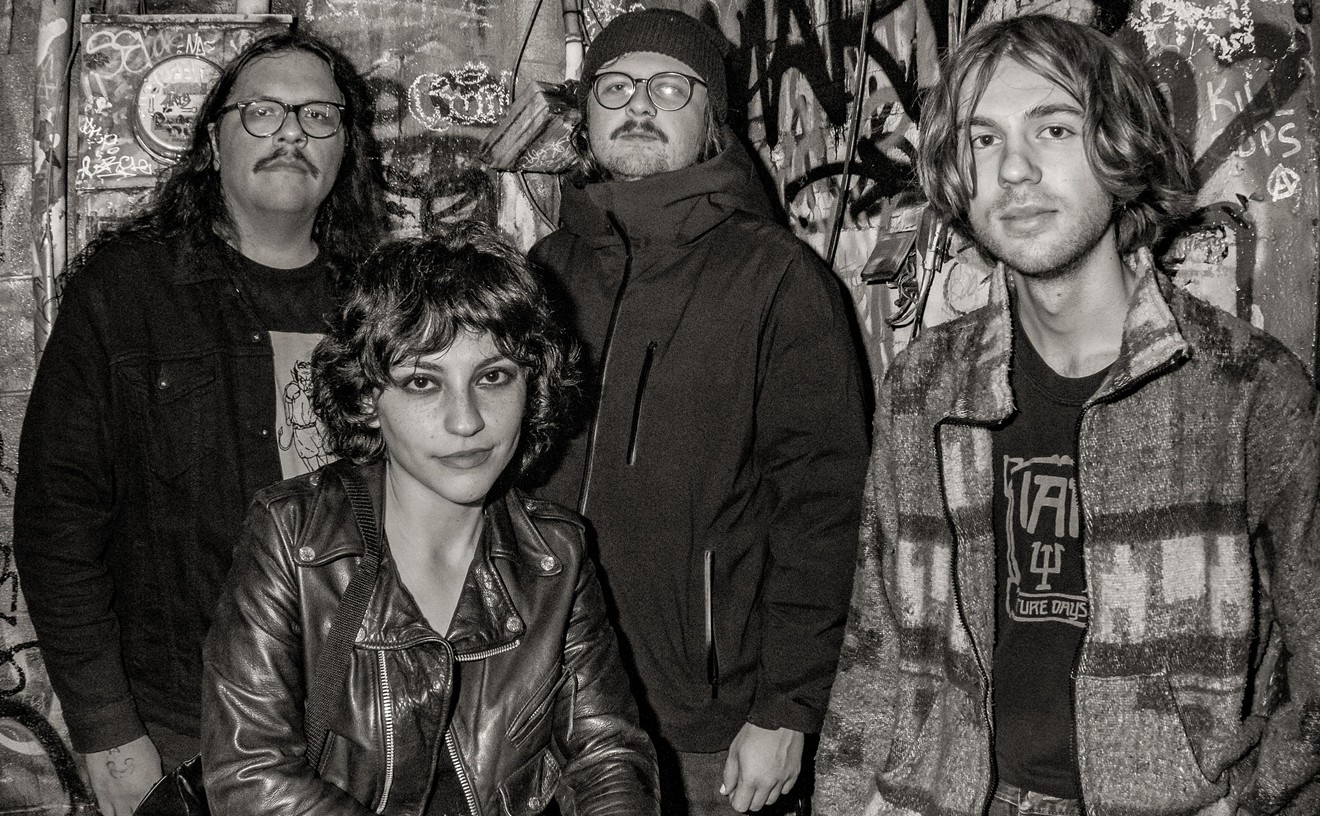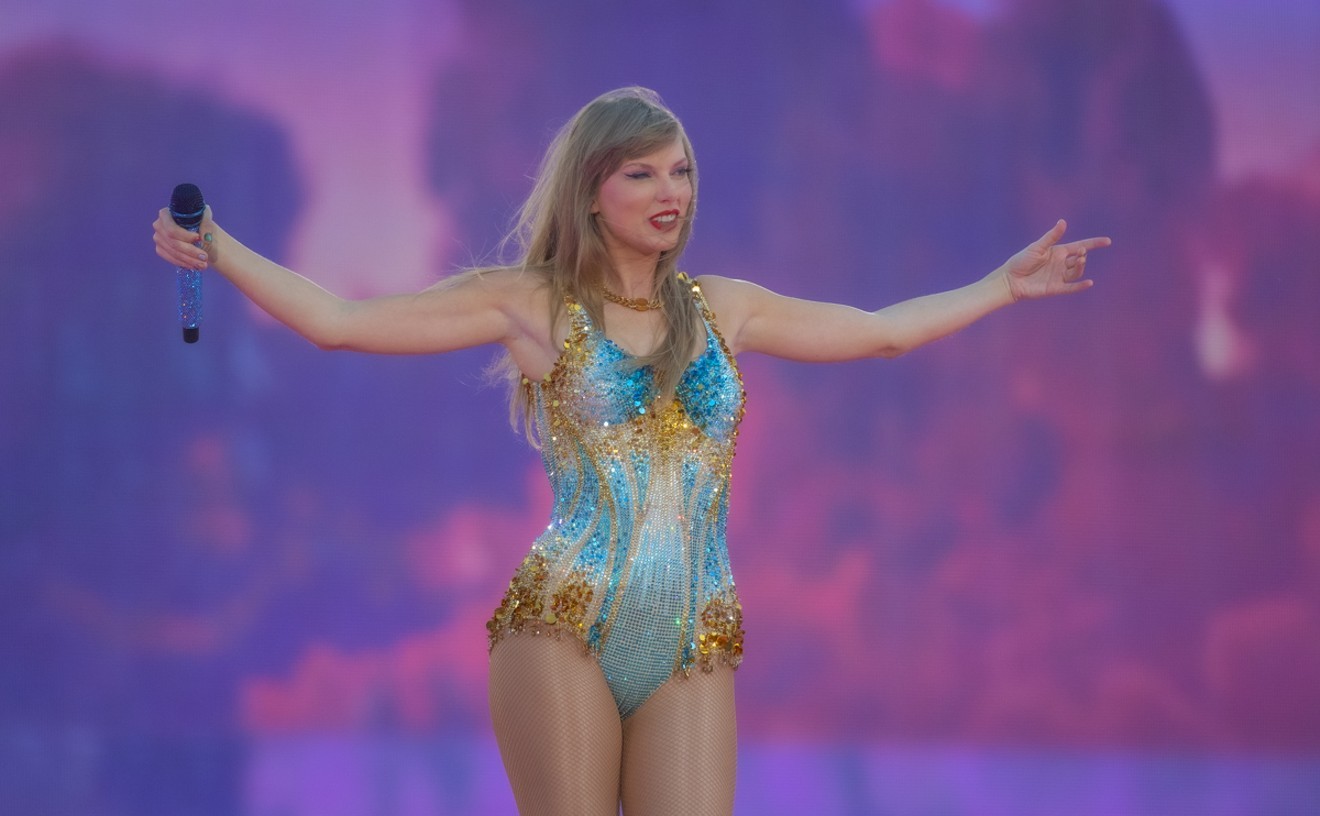Yet Size, speaking from his native England, claims not to care if he and his music are described as drum and bass, jungle, or whatever. With characteristic forthrightness, he says, "Call me anything but a cunt."
After delivering this salvo, Size laughingly tries to retract it (too late!). Still, he never refutes the sentiment behind his impolitic proclamation. Dance music, like every other musical form, has its share of rules and regulations, but Size sees no reason why he should be limited by them. "Maybe the reason radio isn't picking up on what we're doing in different areas is because they don't feel we're working toward their format -- and we're not," he says, his accent thicker than most of his mixes. "There's no drum-and-bass station in America that I know of. But we are working toward a format. It's just that the format is in our world. The format is in our heads."
As Size sees it, his music "comes from all my experiences," beginning in Bristol, the English coastal city where he was born to a Jamaican couple who moved to Great Britain in the '60s. The family was hardly well off, but, he says, "It was a great upbringing. I had brothers and sisters, so there was a lot of music around -- a lot of soul and R&B, before rap started. I can remember when rap was born, but before that, I was interested in a lot of things, like reggae and really early Michael Jackson. I loved Off the Wall."
Given the danceability of Jackson's pre-Thriller solo material, it was only natural that Size would be drawn to DJ culture. "I learned to pick it up really quickly," he says. "In school, I was trying to do sums and write literature and learn French, and I just couldn't pick it up that quickly. But when I put my hand on a turntable and started to perform, it was instant. I didn't have to read a textbook on how to mix, you know what I'm saying? I just learned to mix right away, and then I was like, 'What's next? A drum machine? Okay, turn that on. What's after that?'"
Initially, Size had no delusions of grandeur: "I used to make music just for me, just for the shelf. I'd leave it there, and I was quite happy to do that. But then my music started to get out a little bit -- I got recognized. Before that, I was at college studying, and the music was coming second in my life, really. But it kicked in when I was in college, because I had problems trying to get the grades. So I dropped out of college and focused on music. It was really my last resort."
In 1993, Size, along with friends Suv, Krust and Die, who are members of Reprazent to this day, formed Full Cycle, an independent imprint, and began making music together. Two years would pass before Size and Reprazent signed with a larger company, Talkin' Loud, and another two before the delivery of New Forms, a collection of spare, brittle, enthralling dance tracks. Size covered a lot of territory on the set, moving effortlessly from the full-court press of "Railing" to the gentle spaciness of the title track, and he was repaid for his ambition with the Mercury Music Prize, widely viewed as the most prestigious award the English music industry bestows. The plaudit was accompanied by £25,000 in cash, which Size promptly donated to the Basement, a youth center where he'd first gotten the chance to DJ. He calls this act "the one thing I'd like to be remembered for."
New Forms was a huge hit in Europe, but it made only modest incursions into the U.S. market. So when reviewers discovered that In the Mode featured expanded roles for Reprazent's MC, Dynamite, and principal vocalist, Onallee, as well as guest appearances by the likes of Method Man, of Wu-Tang Clan fame, Rahzel from the Roots and erstwhile Rage Against the Machine haranguer Zack de la Rocha, most of them concluded that Size was making an overt bid for stateside success. But Size bristles at this suggestion, pointing out (accurately) that none of the superstar cameos appear in pieces ready-made for airplay. "Ghetto Celebrity," with Method Man, is a relentless rhythm-fest that goes on for nearly seven minutes; "In Tune With the Sound" pits Rahzel's very human beat-boxing chops against Size's electronic variations; and "Centre of the Storm" allows de la Rocha to take lyrical swings at New York mayor Rudolph Giuliani with regard to the death of Amadou Diallo, an unarmed West African immigrant who died in 1999 after four NYC cops pumped a total of 41 bullets into him. (Since when are lines such as "So to the mayor/May I say I/Endorse the wholesale murder of your force/Of course" guaranteed tickets to the hit parade?) Furthermore, even the recording's single, "Who Told You?" eschews easy hooks in favor of a tone that's dark and jittery. The tune, and the album as a whole, don't sell out; they raise the stakes.
Not that most of the media noticed. "The press need to write something, and in most cases they normally write what other people have written before," Size says, adding, "I don't feel there's been one journalist who can or will understand what we were trying to do with In the Mode." According to him, the record "was definitely made for the stage, for the live show. We had a lot of problems with New Forms, because when we came to do shows, we didn't even have half the loops we'd used, so we had to go and find them again through records and shit, and then we had to mix it all down, and then EQ it, and then realize that the quality was shit. It wasn't until halfway through the tour that we actually sussed out how to do the thing live and do it well. And we didn't want that to happen again. We wanted to be performing as artists rather than being up there and winging it and hoping that everything wasn't going to break down. So we tried to make In the Mode sound very simple, very sharp and very accessible to the audience that came out to support what we do as Reprazent."
Contemporary dance artists regularly insist that putting on a good show is important to them, but unlike Size, most of them rarely deliver. As a result, dance acts have had difficulty moving from the underground clubs or outdoor raves where they were nurtured to more traditional performance venues, particularly in this country. Mere weeks ago, for instance, the Mekka Electronic Music Festival, a ten-date tour set to feature dance stars such as Armand Van Helden, Josh Wink, Paul Oakenfold, the Crystal Method and Size was abruptly canceled in the wake of generally weak ticket sales. Could it be because concertgoers aren't interested in spending hour after hour watching faceless guys twiddling knobs behind banks of gear? Size won't go there, but he emphasizes that his appearances don't fit the usual stereotypes. First of all, he's generally joined by a slew of helpers, including Krust, Suv, Die, Dynamite, Onallee and a handful of living, breathing musicians. Second, these folks don't spend their time in the spotlight gazing at their shoes.
"We perform as rock artists from a dance angle," he maintains. "That's why we use vocals from rappers and MCs. It's like I'm the second man, sometimes, backing them up like a hip-hop artist. But it works. At the beginning, you've got people who aren't really sure what they think, and then halfway through they kind of get into it, and by the end of it, everyone's clapping and saying, 'Damn! What happened there?'
"A lot of bands you hear sound great in the studio, but when you hear them live, they don't sound the same," he goes on. "So what we do is, we bring whatever we've got in the studio onto the stage. That way, they're two sides of the same thing. Our studio is on stage. Our stage is in the studio. It works both ways for us. That way we're not trying to re-create what we did in the studio by using something totally different."
By putting such an emphasis on quality, Size hopes to help spread the dance-music gospel to listeners on this side of the Atlantic, where the scene remains a bit behind the curve when compared with its counterpart in Europe. "I went to one of your things in Texas, I think, and it rained -- and all the kids were walking around with muddy shoes, while we were walking around with these plastic bags on our feet," Size points out. "That's very common in Europe; you get free plastic bags from the hotel in case it rains. And when people saw us, they were like, 'Oh, that's such a good idea!' And we said, 'You learn through experience.'"
Equally out of date, Size believes, are the attempts to blame dance music for drug use associated with rave culture. "I don't believe that my music should be painted with the politics of drugs," he says. "I think drugs have been a very important part of the last thirty or forty years of music. But I think people should be allowed to think of me as an artist -- as a young, struggling, into-it person who's trying to succeed and is being successful -- instead of being constantly associated with drugs. Come on, brother, that's a bit deep. I mean, kids are going to take drugs no matter where they are. Maybe they'll do it in a field when they're dancing to music, and maybe they'll do it when they're just on the streets, making their own parties."
True enough, but that hasn't stopped local officials from trying to blame music for the occasional tragedy. After being told about how the water-intoxication death of Brittney Chambers, a young woman who'd taken Ecstasy, led to a governmental crackdown on all-ages venues in Denver earlier this year, Size says, "These issues have been tried and conquered here in Europe. There are testing kits in Amsterdam, where you can test a drug before you take it to make sure how pure it is" -- an approach that is making inroads domestically. "And in England, the big rave companies now work with the police and the environmental-health people to make sure that all the right qualifications are being met. So now in England we have great events every week that prove that with communication between promoters and the government, everything will work out fine. Like, I did a show last week, and the whole thing was perfectly run. Millions of kids, no trouble, just hop up and muck it up, like a dream in the night, and then it's over, and everyone goes home happy."
After a pause, Size notes, with mock exasperation, "I sound like a bloody politician for rave music."
Just another label for him to wear.











